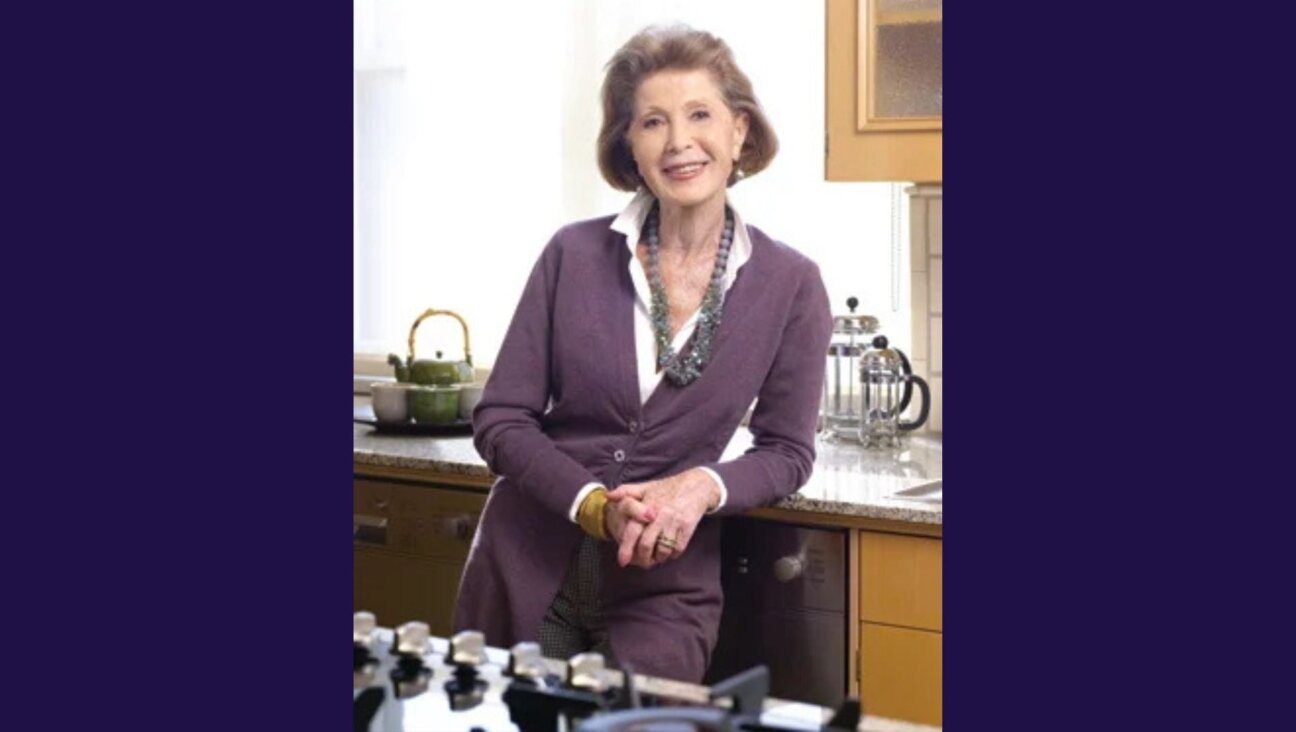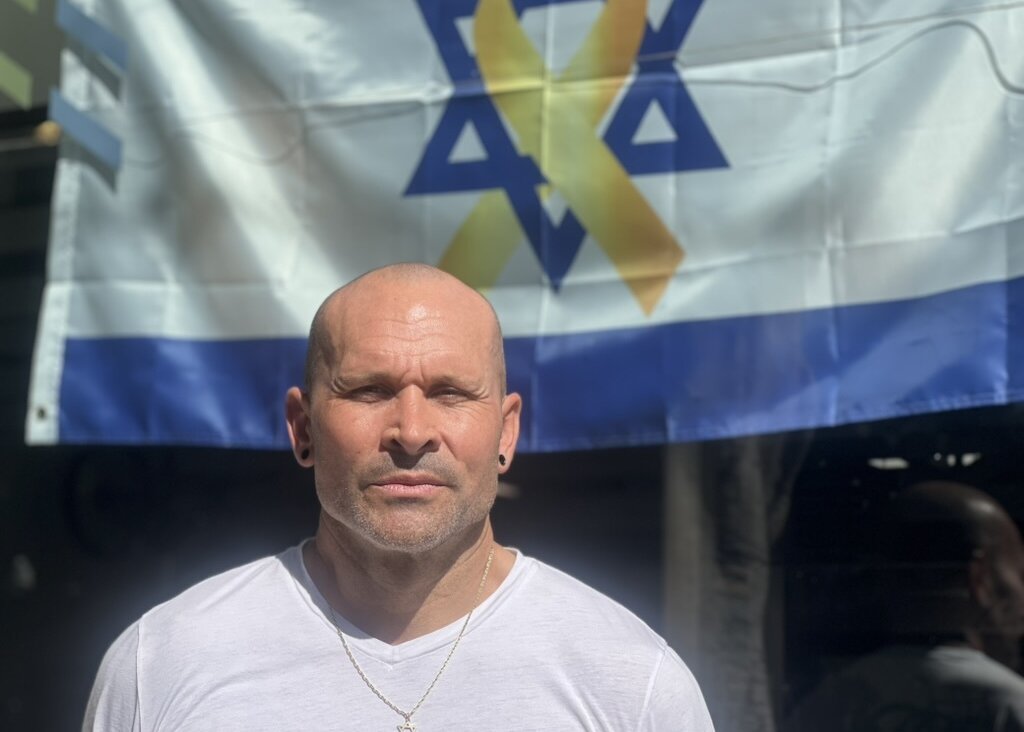These Incredible Photos Show What Hasidic Life Is Actually Like

Graphic by Angelie Zaslavsky
Joshua Haruni spent years documenting life in Israel’s Hasidic communities — from the Rebbe’s office to the tisch’s with thousands gathered to sing, from cheder graduations to the moments in the kitchen on Friday afternoon.
Avital Chizhik-Goldschmidt, life editor, spoke to Haruni about his forays into this community.
This interview has been edited and condensed for style and clarity.

Joshua Haruni at work. Image by Pinchas Emmanuel
My photographic interest in the Hasidic world began with my curiosity in the resurgence of belief in Kabbalah.
As a journalist, I wanted to explore how Israelis were being drawn to this esoteric belief system. The person who helped me with access to this project comes from a very prominent Hasidic family. As work progressed on the Kabbalah project, my Hasidic ‘fixer’ would suggest that I come along to various events at his community where ultimately, I built relationships which allowed me to photograph more and more of the Hasidic way of life.

Image by Joshua Haruni
The portraits are extremely intimate. How did you get in? Why were the subjects okay with your being there, photographing?
Despite being told by my Hasidic friend that I could enter and take some pictures, my habit of getting physically close to my subjects combined with an inherent suspicion of photographers was not received very well. Initially I experienced an enormous amount of hostility, spending two years turning up to communal events, uninvited and unwanted. Within a minute of entering any Hasidic event, at least one person would take me aside, telling me: “Do not photograph.” While I expected resistance, I was never entirely comfortable with the tone in which people spoke to me, which became tedious and even unpleasant; but not unpleasant enough to stay away altogether.

Image by Joshua Haruni
Interestingly, within about two years of my first interaction with Pinsk Karlin Hasidim, I received a call from the Rebbe’s beadle. He suggested that I come to the Rebbe’s apartment in Bnei Brak to photograph him lighting Hanukkah candles. You can imagine how conspicuous I felt photographing in a small room with about 30 Hasidim feeling very protective over their rabbi. After taking a few pictures, I decided to leave. As I made my way out of the apartment, the beadle ran after me and asked if I minded giving the Rebbe a lift to a bar mitzvah nearby. Naturally, I was happy to drive the Rebbe. What I didn’t expect was the number of Hasidim trying to get into my car as the Rebbe sat himself in the passenger seat. As we drove, the Rebbe began talking to me and asking me, very kindly, about what it was I was doing.

Image by Joshua Haruni
I told him about what being a photojournalist means, and that I was interested in photographing the Hasidic way of life in a way that was as honest and objective as possible. I also mentioned that a number of totally secular Jews, who had seen my photographs, had reacted in a very positive way to the point that it had encouraged them to be more proactive in their religious commitment and observance. The Rebbe showed real interest in my work.
Two days later, I received a phone call asking me if I was interested in coming to a Hanukkah tisch at the Pinsk-Karlin synagogue. I arrived a little late, just as the Rebbe was giving a talk. Sure enough, I climbed the bleachers and squeezed myself in between two Hasidim who simultaneously told me not to photograph. Incredibly however, as I settled into my seat, the Rebbe paused and looked up at me and raised his hand in a greeting of “Shulem” (Shalom). After that, the Hasidim around me told me that I was permitted to photograph, and even asked if they could hold my camera bag.

Image by Joshua Haruni
From that evening onward, I was left alone. This did not mean that every Hasid liked what I did or even approved of me being around with a camera, but it meant that the Hasidim began to relax around me, which in turn created the necessary space in which to develop relationships and to photograph more intimately.

Image by Joshua Haruni

Image by Joshua Haruni
What do you think we, the media, miss when reporting on the Haredi community?
The diversity. Most Haredim tend to be viewed as one and the same. The nuances between the various Hasidic courts or the various branches of the Lithuanian movement and Sephardi Haredim are ignored.
And the fact that they are, largely, very normal people who share the same family and communal dynamics as everyone else. I think that the media has a tendency to focus on the social difficulties experienced by these communities and the ugly behavior displayed by extremists.

Image by Joshua Haruni
At an interpersonal level, I believe that secular and Orthodox Jewish communities are more exposed to each other than ever before, with more people from either way of life choosing to adopt each other’s way of life. This is illustrated by the increasing numbers of secular Israelis adopting a strictly observant lifestyle, and an increasing number of Haredim choosing to leave their communities to become secular.
With regard to Hasidic communities in particular, I think that the media has a tendency to forget the historic contexts of these communities, and ignore the layers of historic tradition which have kept the communities together.

Image by Joshua Haruni
What was the most surprising thing you discovered about the Haredi community, as you photographed?
That they are not as naïve as you think.
While Haredim value innocence, and attempt to protect the community from outside influences that they consider frivolous, the Hasidic leadership is quite aware of what goes on [outside its community’s walls] and are surprisingly very practical.

Image by Joshua Haruni

Image by Joshua Haruni
This interview has been edited and condensed for style and clarity.

















